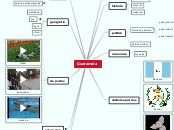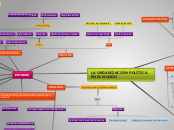tema: tabla periodica
A noun is a word that functions as the name of some specific thing or set of things, such as living creatures, objects, places, actions, qualities, states of existence, or ideas.
HENRY MOSELEY 1913
REAGRUPO EL CRECIMIENTO DEL NUMERO ATOMICO PORQUE LA MASA YA ESTABA INCLUIDA
DETERMINO LA CARGA NUCLEAR
DMTRI MENDEEV 1869
Compound nouns are words where two nouns have been stuck together to make a new noun. Compound nouns should be written as one word, without a hyphen.
Y FUE EN ORDEN CRECIENTE DE ATOMOS Y INCLUYE SU MASA ATOMICAA
PUBLICO SU PRIMER TABLA PERIODICA
1863 JOHN NEWLANDS
Generic nouns are nouns that are part of a generic statement. Generic nouns can be singular or plural. The opposite of generic nouns is collective nouns.
The difference between definite/indefinite and generic nouns is that in the sentence there must be a blanket statement or question.
PROPUSO LA LEY DE LAS OCTAVAS CON LA CUAL SE MANEJA EN LA TABLA PERIODICA
1917 Y 1929 JOHAN DOBEREINER
Proper nouns are the names of specific people or places. They should always begin with a capital letter.
FRACASO EN SU PROPUESTA PORQUE NO TODODS LOS ELEMENTOS SE AGRUPAN EN TRIADAS
CLASIFICO ALGUNOS ELEMTOS
HISTORIA DE LA TABLA
A concrete noun is a noun that can be identified through one of the five senses (taste, touch, sight, hearing, smell).
https://www.explora.cl/blog/cual-es-el-origen-de-la-tabla-periodica/#:~:text=Entre%201917%20y%201929%2C%20el,que%20ten%C3%ADan%20propiedades%20qu%C3%ADmicas%20similares.&text=En%201869%2C%20el%20qu%C3%ADmico%20ruso,orden%20creciente%20de%20masa%20at%C3%B3mica.
DISPOSICION DE LOS ELEMENTOS QUIMICOS QUE LOS CONFORMAN
Possessive nouns are nouns which possess something, normally another noun.
SON ESENCIALES CADA UNO DE LOS ELEMENTOS EN NUESTRA VIDA COTIDIANA PORQUE HACEN FUNCION A LOS MATERIALES QUE REQUERIMOS
tiene 18 grupos la tabla periodica
Countable nouns are nouns that can be counted, even if the number might be extraordinarily high.
Uncountable nouns are nouns that come in a state or quantity which is impossible to count; liquids are uncountable, as are things which act
like liquids.
FAMILIA O GRUPO GASES NOBLES
FAMILIA HALOGENOS VIIA
FAMILIA NITROGENOIDEOS VA
FAMILIA CALCOGENOS O ANFIGENOS VIA
FAMILIA DE LOS A TERREOS IIIA
FAMILIA CARBONOIDES IVA
FAMILIA DEL ZING IIB
FAMILIA DEL NIQUEL VIIIB
FAMILIA DEL COBRE I B
FAMILIA DEL HIERRO VIIIB
FAMILIA DEL COBALTO VIIIB
FAMILIA DEL TATANIO IV B
FAMILIA DEL CROMO VI B
FAMILIA DEL MAGNESIO VIIB
FAMILIA DEL ESCANDIO III3
METALES ALCALINOTERREOS IIa
METALES ALCALINOS ( Ia)
construida por 7 elementos
Common nouns are words for people, places or things that aren’t specific (as opposed to a proper noun which refers to only one person, place or thing).
Common nouns can be countable or uncountable, singular or plural.
7 PERIODOS EN VERTICAL
CADA ELEMTO TIENE DIFERENTE PERIODO
112 elementos que compone
A noun which cannot be identified by using one of the five senses (taste, touch, sight, hearing, smell).
El elemento 112 es unas 227 veces más pesado que el hidrógeno, lo que lo convierte en el más pesado de la tabla periódica. ... La denominación de 112 señala el número atómico resultante de la suma de los números atómicos de los dos elementos iniciales a partir de los cuales se creó el nuevo (30 del zinc y 82 del plomo)
estrctura actual de ella
Irregular nouns are nouns which don’t follow a spelling pattern when pluralized.
en ella se forman los elementos esenciales









